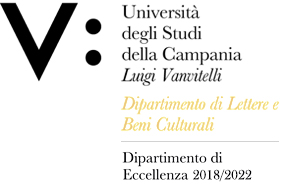Giuseppe PIGNATELLI SPINAZZOLA
Insegnamento di STORIA DEL RESTAURO
Corso di laurea in CONSERVAZIONE DEI BENI CULTURALI
SSD: L-ART/04
CFU: 12,00
ORE PER UNITÀ DIDATTICA: 60,00
Periodo di Erogazione: Secondo Semestre
Italiano
| Lingua di insegnamento | Italiano |
| Contenuti | Storia del Restauro. Teoria e storia del restauro dall’antichità ai giorni nostri: restauro archeologico, architettonico, pittorico e scultoreo; concetto di recupero e di reimpiego; l’Antico dal Rinascimento al Settecento. Il restauro moderno: teorie e interventi fra Otto e Novecento. La tutela dei monumenti e delle opere d’arte nel Novecento. |
| Testi di riferimento | S. Casiello (a cura di), Verso una storia del restauro. Dall'età classica al primo Ottocento, Firenze, Alinea 2008. |
| Obiettivi formativi | Il corso si pone l'obiettivo di fornire allo studente gli strumenti necessari ad un primo approccio alla storia del restauro e alle principali tipologie di interventi conservativi, nonché all’interpretazione critica delle diverse fasi del dibattito teorico sul restauro e sulla tutela del patrimonio artistico. Esprimendosi in forma chiara e appropriata, e avvalendosi della terminologia più consona, alla fine del corso lo studente dovrà prima di tutto dimostrare conoscenze e capacità di comprensione delle diverse fasi del restauro e della conservazione, applicando conoscenza e capacità di comprensione con un approccio professionale. Lo studente dovrà poi dimostrare la propria capacità di raccogliere e interpretare i dati ritenuti utili a determinare giudizi autonomi, riuscendo a comunicare informazioni, idee, problemi e soluzioni per sviluppare nel contempo capacità di apprendimento con un alto grado di autonomia. |
| Prerequisiti | Nessuna propedeuticità. È auspicabile tuttavia la conoscenza delle nozioni di base di archeologia, della storia dell’arte e dell’architettura antica e moderna. |
| Metodologie didattiche | Lezioni frontali, esercitazioni, seminari, sopralluoghi, partecipazione a convegni e conferenze. |
| Metodi di valutazione | Prova orale. La valutazione dell'esame avverrà sulla base della coerenza delle risposte e sulla base della correttezza linguistica, tenendo conto della completezza delle conoscenze specifiche del candidato. Il voto finale sarà calcolato nel seguente modo: |
| Altre informazioni | Le slides proiettate durante il corso verranno gradualmente messe a disposizione degli studenti, e saranno di esclusivo supporto ai testi di riferimento. |
| Programma del corso | - Il concetto di restauro. Restauro architettonico, pittorico e scultoreo. |
English
| Teaching language | Italian |
| Contents | Theory and history of restoration from antiquity to nowadays: archaeological, architectural, pictoral and sculptural restoration; the concept of recovery and reuse; the Ancient from the Renaissance to the eighteenth century. The modern restoration: theories and interventions between the nineteenth and twentieth centuries. The protection of the cultural heritage in the twentieth century. |
| Textbook and course materials | S. Casiello (ed.), Verso una storia del restauro. Dall'età classica al primo Ottocento, Firenze, Alinea 2008. |
| Course objectives | The aim of the course is to provide students with the instruments for a first analysis of the history of restoration and the main types of conservation interventions, and to interpret critically the different phases of the theoretical debate about restoration and of the protection of the cultural heritage. At the end of the course, the students will have to demonstrate knowledge and understanding of the different restoration and conservation operations, applying knowledge and understanding with a professional approach. The student will then have to demonstrate his ability to collect and interpret the data considered useful to determine autonomous judgments, managing to communicate information, ideas, problems and solutions to develop, at the same time, communication skills with a high degree of autonomy. |
| Prerequisites | No propaedeutics. It is desirable the basic knowledge of the archaeology and of the history of ancient and modern art and architecture. |
| Teaching methods | Lectures, inspections, partecipations in conferences and workshops. |
| Evaluation methods | Oral exam. Exam assessment is based on the overall level of student performance which takes into account knowledge of course content and clarity, accuracy and appropriacy of language use. The final exam grade will be calculated as follows: |
| Other information | The slides used during lectures will be made available to the students, and will form an integral part of the study material. |
| Course Syllabus | - The concept of restoration. |








